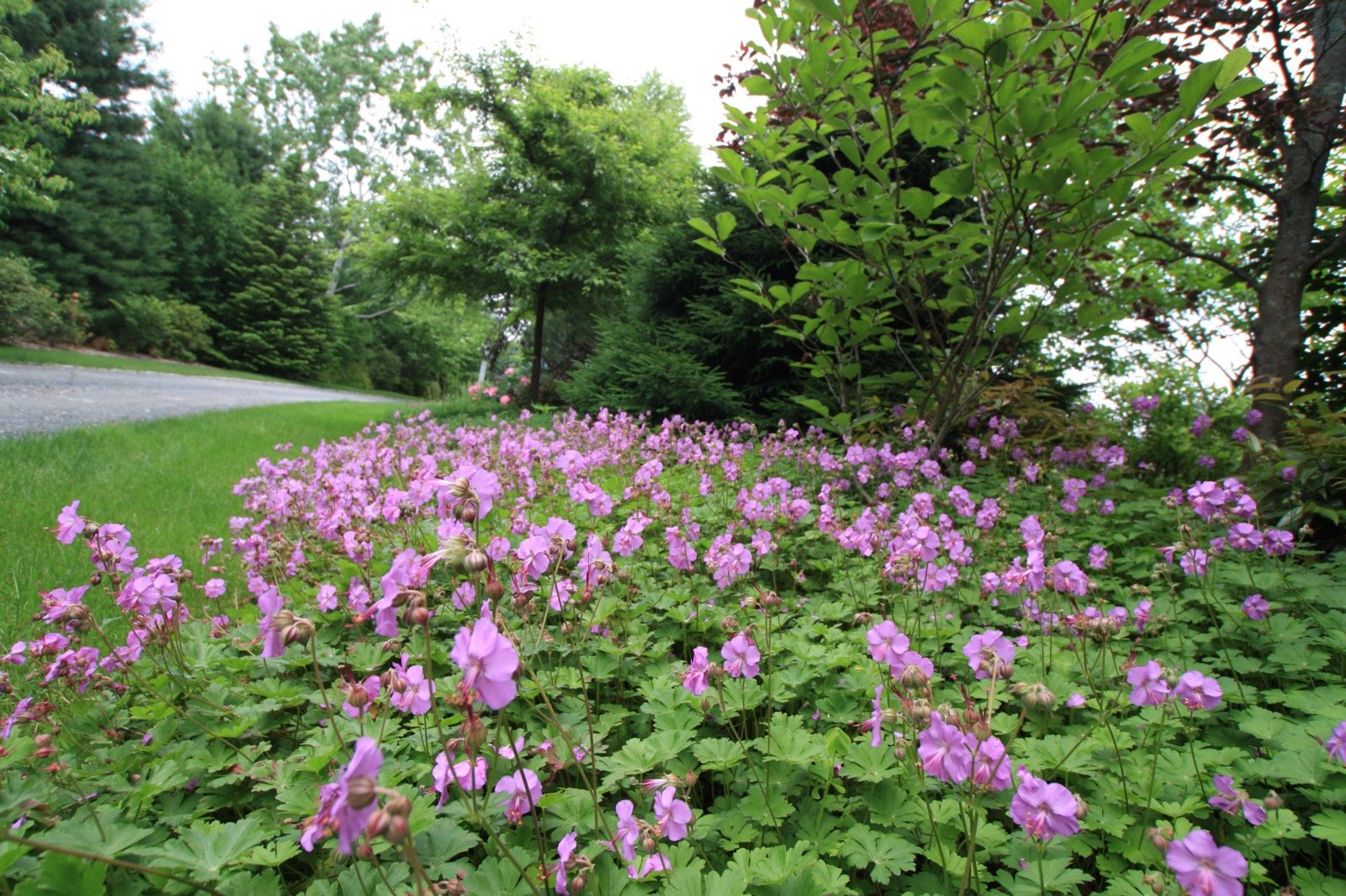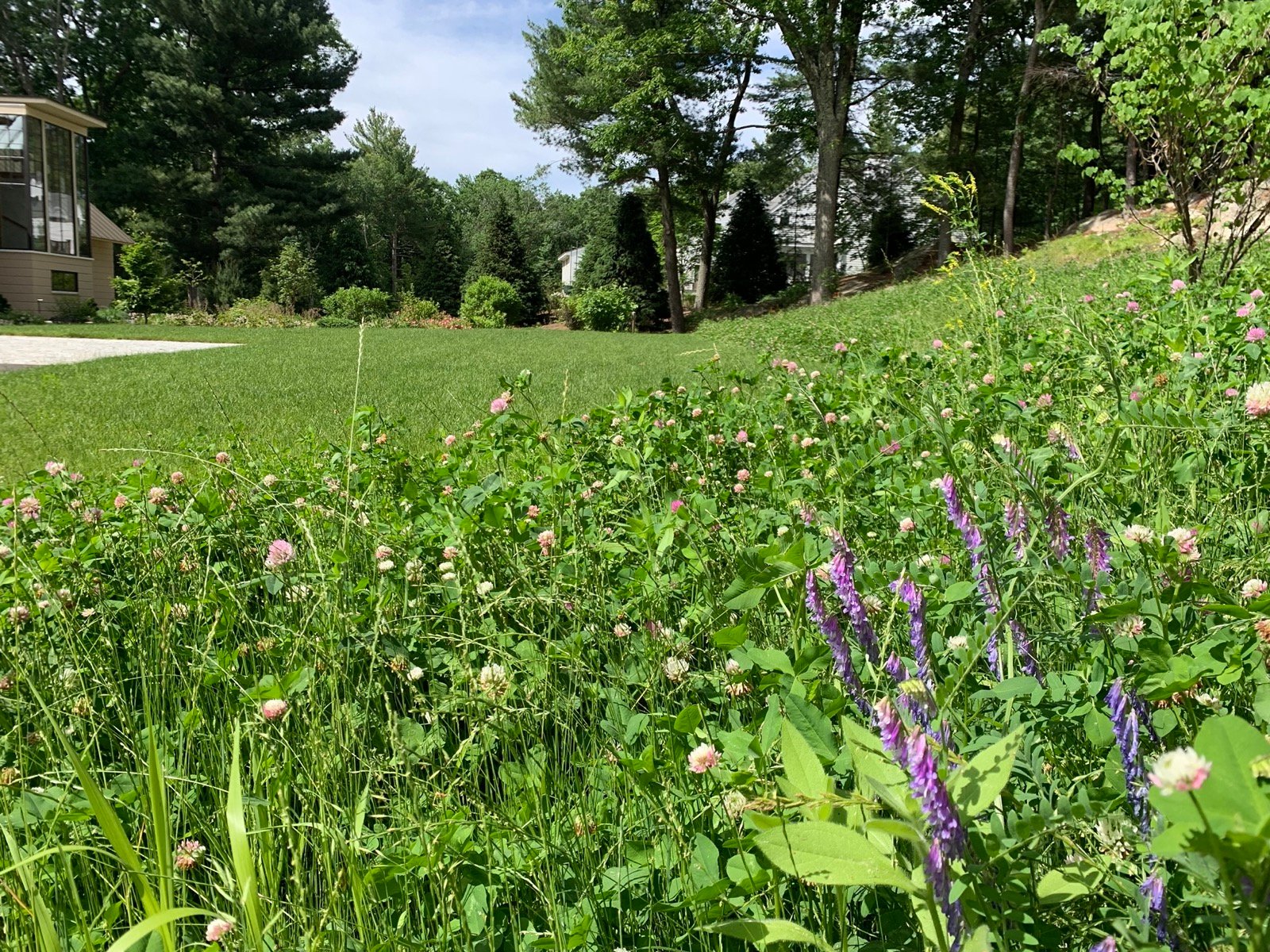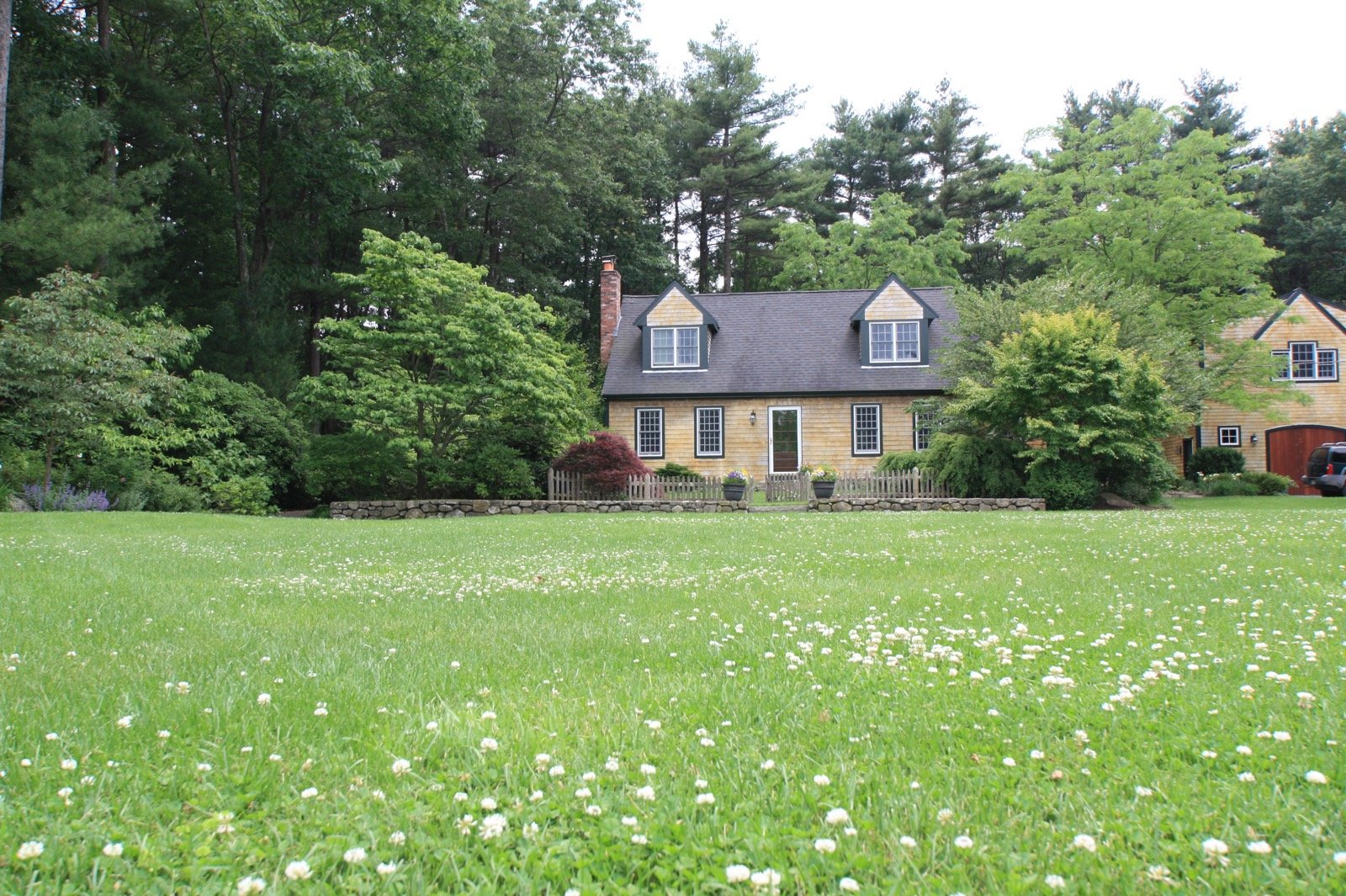More than any fruit or vegetable, lawns are the largest irrigated crop grown in the United States. According to a satellite imaging study conducted by NASA, lawns cover an area six-times the size of Massachusetts. That study was conducted nearly two decades ago. Imagine how much land area lawns cover today? It seems irresponsible considering the cost of food and the decline of pollinators.
If you maintain a lawn, the effort and money (not to mention the water) might seem justifiable if you spend time entertaining of playing out there, but if your primary goal is to keep up with the Joneses, it might be time to re-prioritize.
No Mow May: Fleeting Meme or Permanent Lifestyle Change?
Enter, No Mow May. It’s a meme movement you may have seen on social media. The movement’s purpose is to take back habitats for native pollinators, but the problem is that it’s temporary. Unless you’re willing to stick with a pro pollinator regimen for the remaining eleven months out of the year, you may as well have mowed in May.
Somewhere deep down in our psyche having a neat lawn is tantamount to success. The first grass lawns were seeded as status symbols for members of the European aristocracy. Last time I checked, there were no aristocrats living in my neighborhood (How about you?). And, yet the state of our lawns somehow still represents our status.
They tell passers by a bit about our socio-economic ranking and are indicative of whether or not we’re living the American Dream. The uniformity of lawns are a signal to others that we want to belong and that we’re upstanding members of the community. Some people may feel they don’t have a choice. Many neighborhoods impose strict rules on lawn maintenance, but much of the desire and motivation falls on our own shoulders.
If you think you’re not willing to live amongst the weeds, No Mow May isn’t for you. No Mow May allows Mother Nature to reclaim her territory - but gives humans permission to take it back on June 1st. At that point, you’ll either love the meadow in your front yard, or you’ll be running to the nearest home improvement store in search of weed killer to suppress the creeping Charlie, clover, dandelions and violets that have infiltrated your once pristine swath of green.
Neighbors will talk. It’s up to you not to buckle under pressure. A recent New York Times article titled, “In Wisconsin: Stowing Mowers, Pleasing Bees,” written by Anne Readel described the plight of one woman who committed to No Mow May. Her grass got so long, her neighbors called the police because they thought she died! Do the research, know the facts and be willing to educate the community about why you made the decision. Your lesson might just resonate with that nosy neighbor.

Geranium cantabridgiense ‘Biokovo’ - a great plant to cover land that could have been lawn
Breaking Tradition: Transforming Your Yard with Sustainable Lawn Alternatives
If letting your lawn grow seems too crazy, try eliminating a patch of grass and replacing it with a perennial garden bed. It’s a perfect alternative. Not only will the pollinators love it, but it will be a beautiful addition to your yard.
The best thing about native perennial beds is that the flowers come back year after year. You’ll have to water until the roots are established, but because native perennials have adapted to your local environment over time, very little maintenance is required. Every other year, you may have to divide plants if they outgrow their space, but it’s worth it. I don’t know about you, but free plants sound way better than a boring patch of grass!
Planting trees is another great alternative. Trees provide shade, improve air quality, reduce soil erosion, and create habitats for wildlife. Native trees are usually the best choice because (you guessed it) they require less maintenance and they have a better chance of thriving. Before planting, make sure your tree will have enough room to grow and mature. And, finally consider adding mulch or other ground cover around the base of the tree to suppress weeds and maintain moisture.
If replacing a portion of your lawn with a perennial bed or trees seems a little too daunting, you can always add some clover to the mix. Clover grows quickly, suffocates weeds, enriches the soil and feeds the bees. Oh, and did I mention how good it feels on bare feet?

Mix & Match - can't give up all the lawn - consider half turf & half mixed clover & vetch
Embrace the beauty of Natural Chaos, You Might Just Love It!
So, what about you? Are you ready to embrace a messy but beneficial yard? Maybe you are, but your family isn’t (that's always the case, right?)
We’ve come to terms with it. Even though, we’re not letting all the grass grow, we’re committed to taking back some of our lawn little by little.
Our lawns are already a mix of turf and Dutch white clover. And, this year, I’m resolving to plant two pollinator gardens. It’s exciting. Like a blank canvas. A chance to showcase some creativity and artistic vibes.
Monique made it through last year’s drought with minimal well-water use thanks in large part to the native plants she chose for her own gardens. For years, she has prioritized reclaiming her lawn and transforming it into a dazzling yet sustainable work of natural art. She incorporated two large pollinator gardens and completely removed all the lawn on one side of her house to create a peaceful stroll garden in the dappled shade.
One of her newest creations is a 2,400 square foot area with raised garden beds for herbs and vegetables. Using her property as a resource rather than maintaining a resource guzzling space remains the cornerstone of what she wants to accomplish not only in her own outdoor living area but the hundreds of outdoor spaces she has designed for clients over the years.
The Garden Continuum specializes in sustainable, eco-friendly gardening. If you’re considering giving up a portion of your lawn to create an eco-friendly oasis, give us a call, we’d love to schedule a consultation with you.
If you are interested in regenerative gardening, please download our eBook: How Regenerative Gardening will help Fight Climate Change.






Leave a comment